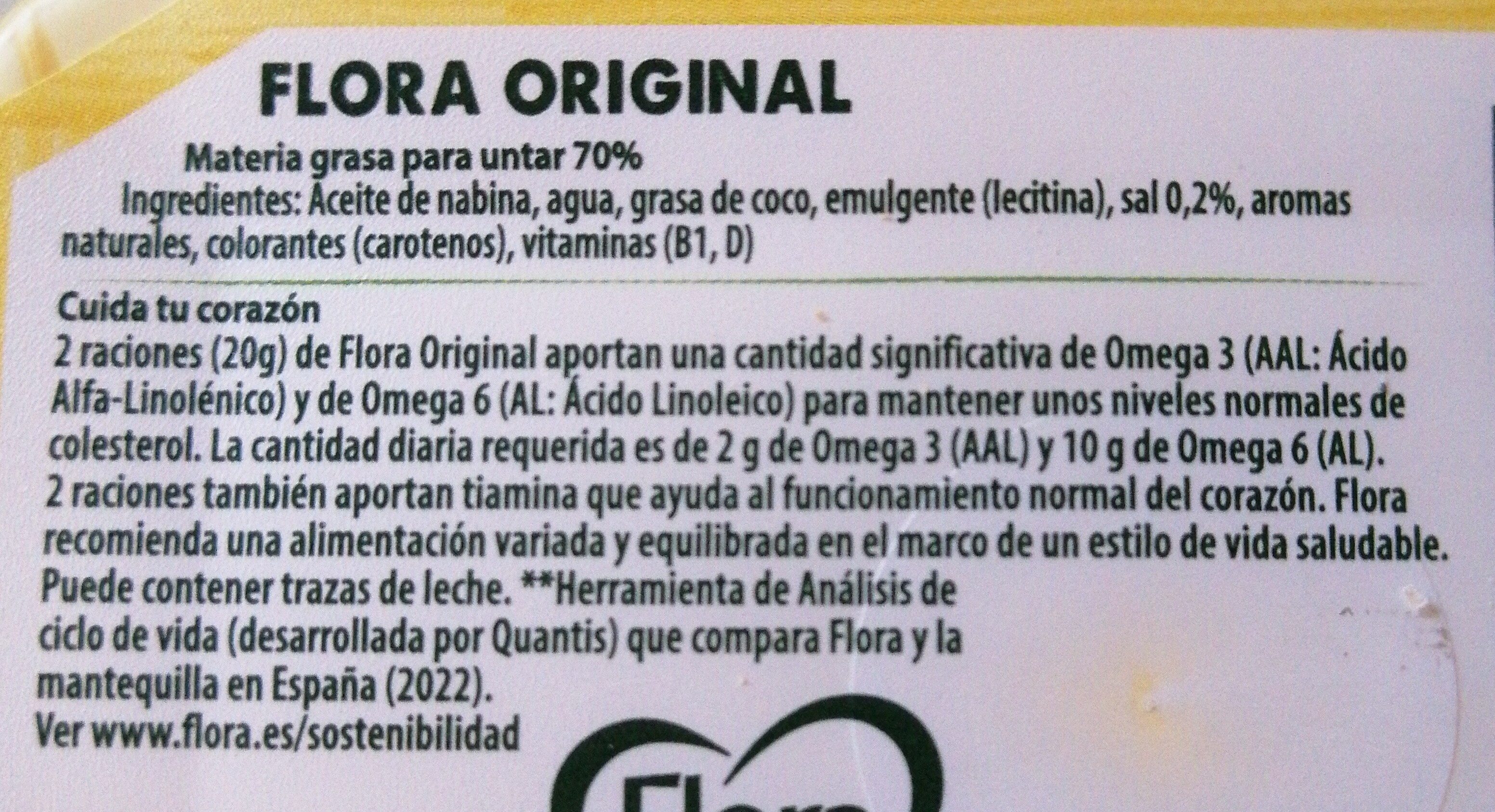Original - Flora - 225 g
This product page is not complete. You can help to complete it by editing it and adding more data from the photos we have, or by taking more photos using the app for Android or iPhone/iPad. Thank you!
×
Barra-kodea: 8719200234628 (EAN / EAN-13)
Izen arrunta: Materia grasa para untar 70 %
Kopurua: 225 g
Markak: Flora
Kategoriak: en:Plant-based foods and beverages, en:Plant-based foods, en:Fats, en:Spreads, en:Plant-based spreads, en:Salted spreads, en:Spreadable fats, en:Vegetable fats, en:Margarines, en:Light margarines
Etiketak, ziurtagiriak, sariak:
en:No gluten, en:Vegetarian, Omega-3, en:Vegan, en:European Vegetarian Union, en:European Vegetarian Union Vegan, en:Green Dot, High in Omega 3, en:No lactose


Manufacturing or processing places: Upfield España S.L.U., Barcelona, España
Saltzen diren herrialdeak: Espainia
Matching with your preferences
Ingurumena
Carbon footprint
Ontziratzea
Transportation
Report a problem
Datuen iturria
Product added on by kiliweb
Last edit of product page on by tasja.
Produktuaren orria -gatik editatua allergies-app-chakib, charlesnepote, halal-app-chakib, moon-rabbit, naruyoko, nikacobos, openfoodfacts-contributors, roboto-app, spotter, vegan-app-chakib, yuka.sY2b0xO6T85zoF3NwEKvlnVmD_bhoDDhah7uoxSF_-61AcfkQItJx6vDIas.










